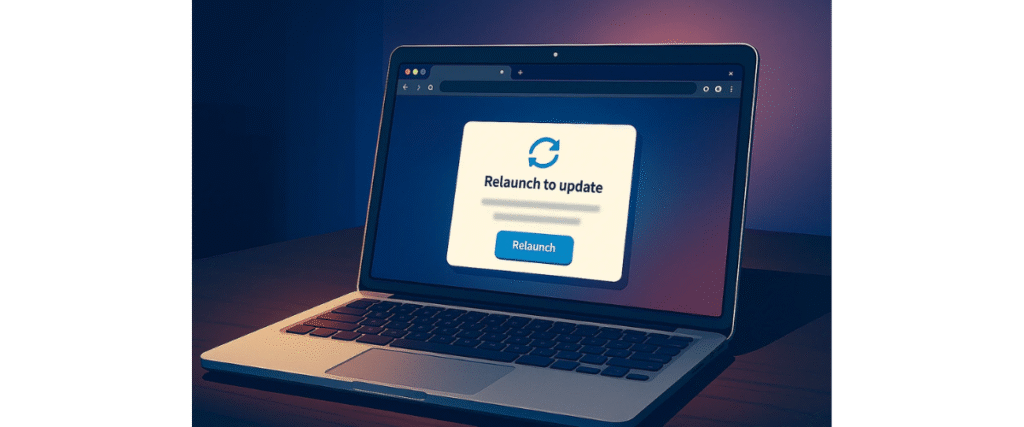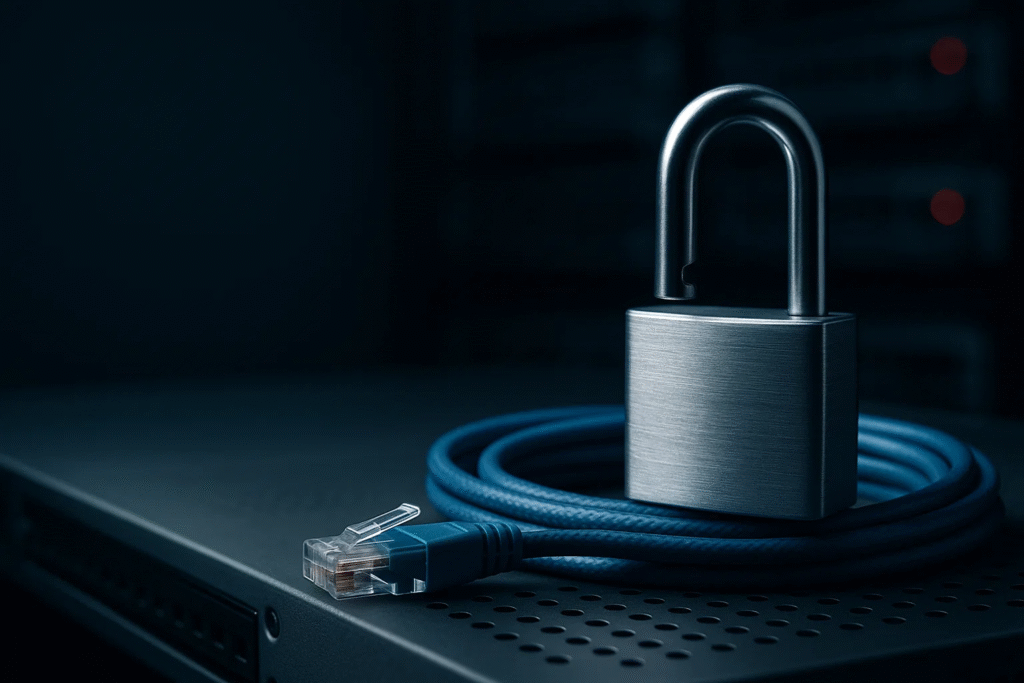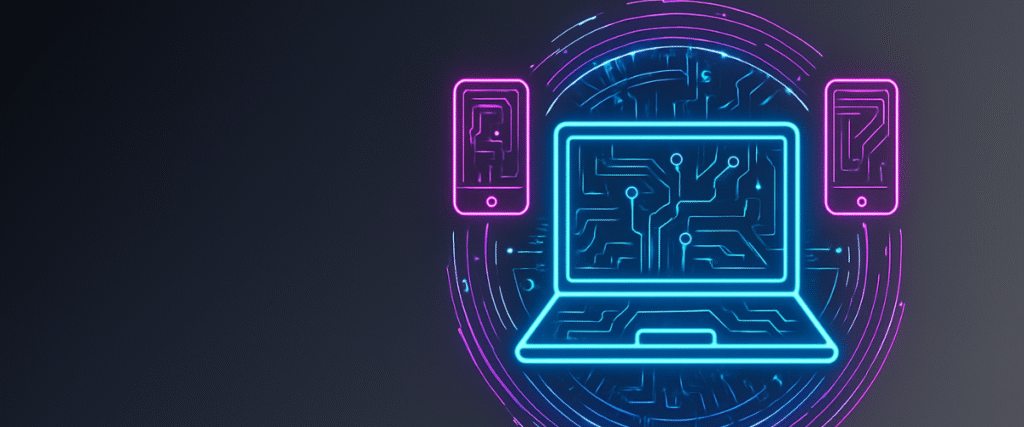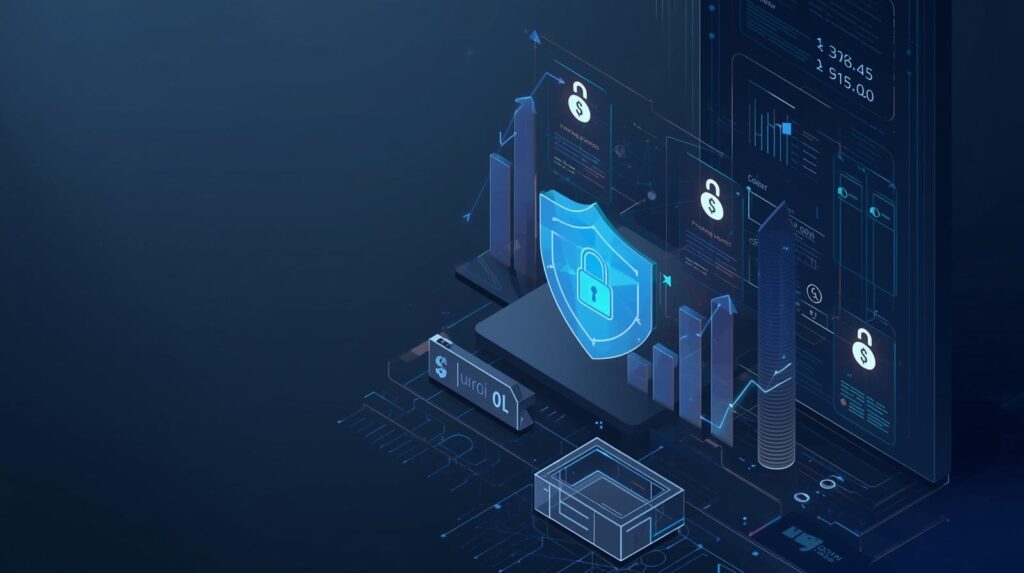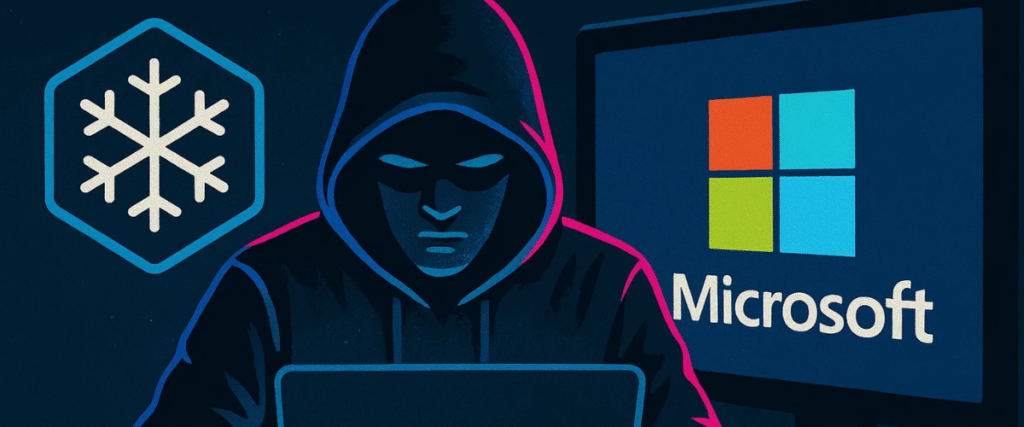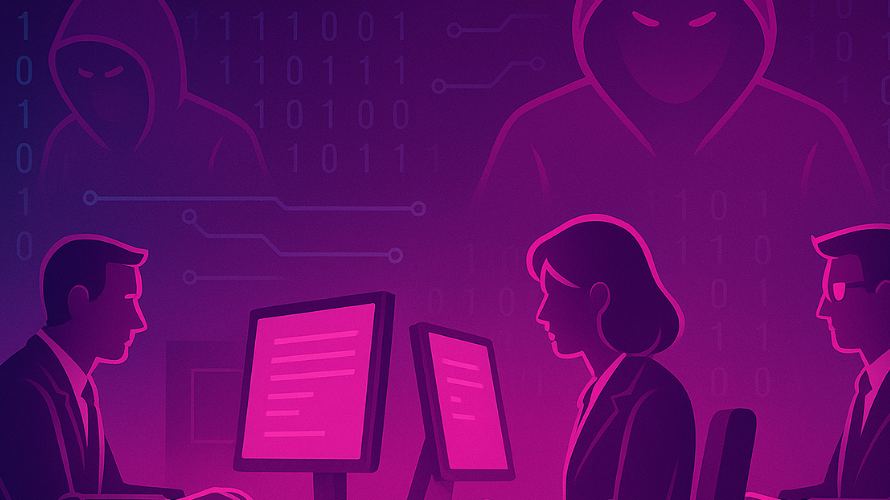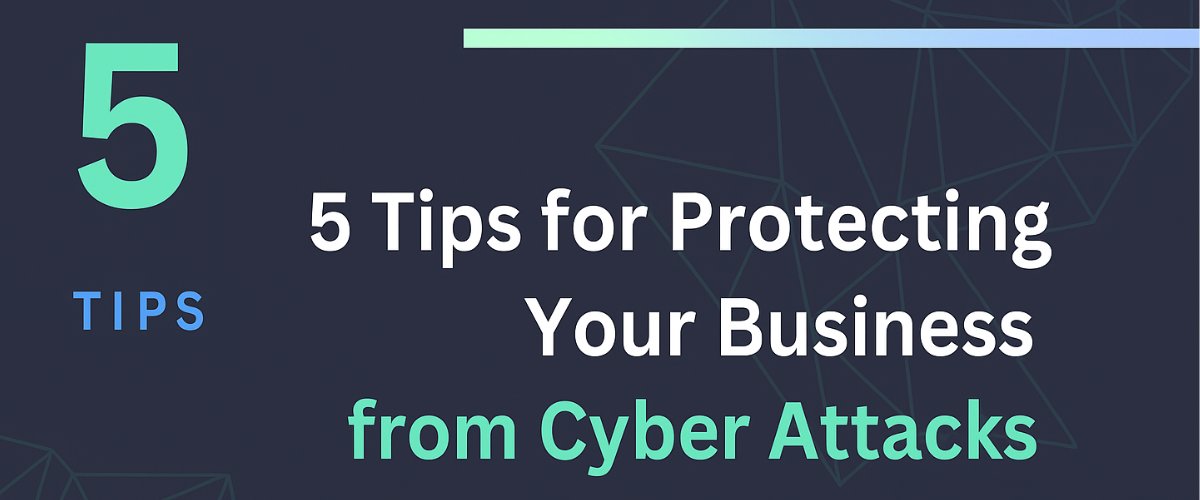
For Canadian SMBs, the right cybersecurity tips turn security into a steady routine: lock down passwords with MFA, standardise updates across devices, train staff to pause and verify, and test backups so recovery is proven. Layer in 24/7 monitoring with clear ownership and metrics, and you’ll cut common threats—phishing, credential stuffing, and unpatched software—keeping operations running, protecting revenue and customer trust, and satisfying insurer and compliance expectations.
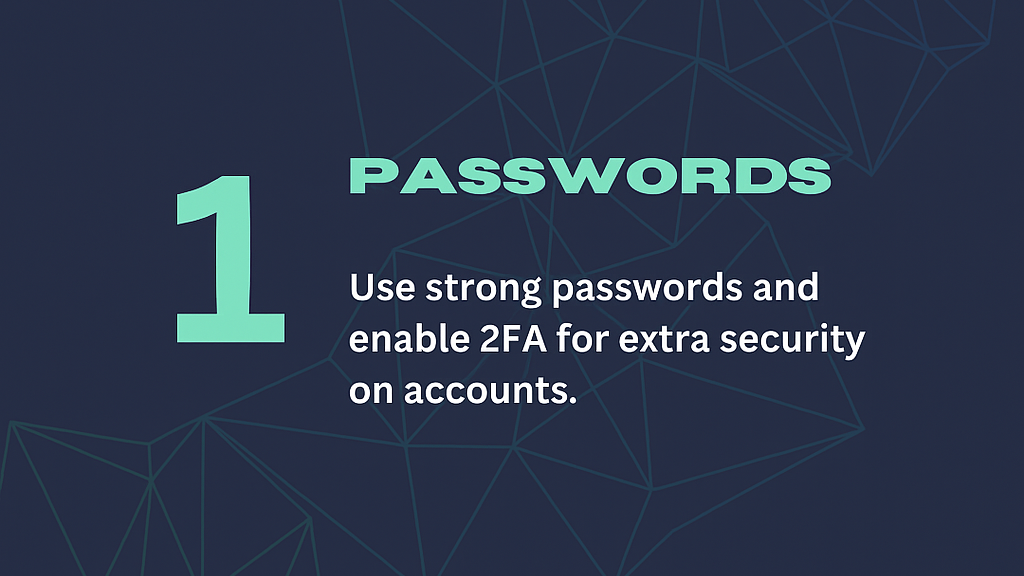
Tip 1 — Passwords & 2FA: Lock the Front Door
Plain-English take: most attacks don’t “hack in”—they log in. If you harden how people sign in and how admin power is granted, you shut the easiest doors and keep a single mistake from turning into a company-wide breach.
Start with passwords that people can actually use correctly. Ditch short, complex strings that drive reuse and sticky notes. Move everyone to passphrases—four or five unrelated words—and make a business-grade password manager part of onboarding. A manager eliminates reuse, enables safe sharing via team vaults, preserves audit trails for investigations, and lets you rotate shared credentials cleanly when roles change or a supplier offboards. Teach staff the “one password to the manager, unique for everything else” mindset and you’ll see risk drop immediately.
Make multi-factor authentication (MFA/2FA) universal. Apply it to email, VPN/remote access, finance/HR applications, line-of-business tools, and every admin portal. Prefer phishing-resistant factors—authenticator apps with number matching or FIDO2 security keys—and keep SMS only as a last resort. Then close the back doors by disabling legacy/basic authentication (IMAP/POP/old SMTP) that can bypass MFA entirely. These two moves—better factors and no legacy protocols—stop the bulk of automated intrusions.
Separate everyday work from admin power. Issue dedicated admin accounts that don’t receive email or browse the web, protect them with security keys, and grant just-in-time elevation so high privilege exists for minutes, not all day. This minimises blast radius if an admin device is phished or infected. Keep two “break-glass” accounts in a sealed, tested process for emergencies.
Centralise access and challenge risky behaviour. Put your top SaaS apps behind single sign-on (SSO) in Microsoft 365 or Google Workspace so one offboard action closes many doors. With SSO, enable conditional access to block “impossible travel,” require healthy devices, and step-up challenge when sign-ins look risky.
Mind the side doors attackers love. Malicious OAuth consents can grant silent, token-based access even when passwords are strong. Restrict who can approve app consents and review them monthly. In mailboxes, alert on auto-forwarding rules and unusual geo-sign-ins—classic signs of business email compromise.
Align identity with finance. Any request to move money or change banking must be verified out-of-band using a number from your vendor master, not the message that asked. Publish a simple MFA-fatigue rule: if you didn’t start the login, deny and report immediately.
4-week rollout (your fast path to safer logins):
- Week 1: Deploy the password manager, migrate shared creds into team vaults, and switch staff to passphrases.
- Week 2: Enforce tenant-wide MFA with authenticator apps or FIDO2 keys; turn off legacy/basic auth.
- Week 3: Bring your top 10–20 SaaS apps under SSO; enable conditional access policies.
- Week 4: Move admins to separate accounts with security keys and just-in-time elevation; schedule monthly reviews of OAuth consents and mailbox rules.
How you know it’s working: MFA coverage reaches 100% of active users; basic-auth logins fall to zero; ≥80% of critical apps ride SSO in the first month; all admins use separate, key-protected accounts; and weekly reviews of forwarding-rule and unusual-geo alerts show nothing suspicious—or catch issues early, before money or data moves.
Keep it durable. Build these controls into HR onboarding/offboarding checklists so access is granted and revoked the same day; require password-manager enrollment before app access; and set quarterly access reviews with Finance and HR to catch role changes. For remote and BYOD users, pair conditional access with device compliance (encryption, screen lock, OS up to date) so risky devices can’t reach sensitive apps.
Avoid common pitfalls like leaving “app passwords” enabled, allowing SMS as the only factor for executives, or letting users consent to third-party apps without review. Finally, treat identity as evidence: export an MFA/SSO coverage report and a short exception log each month—those artefacts satisfy insurers, reassure customers, and prove that identity security is not just policy, but practice.
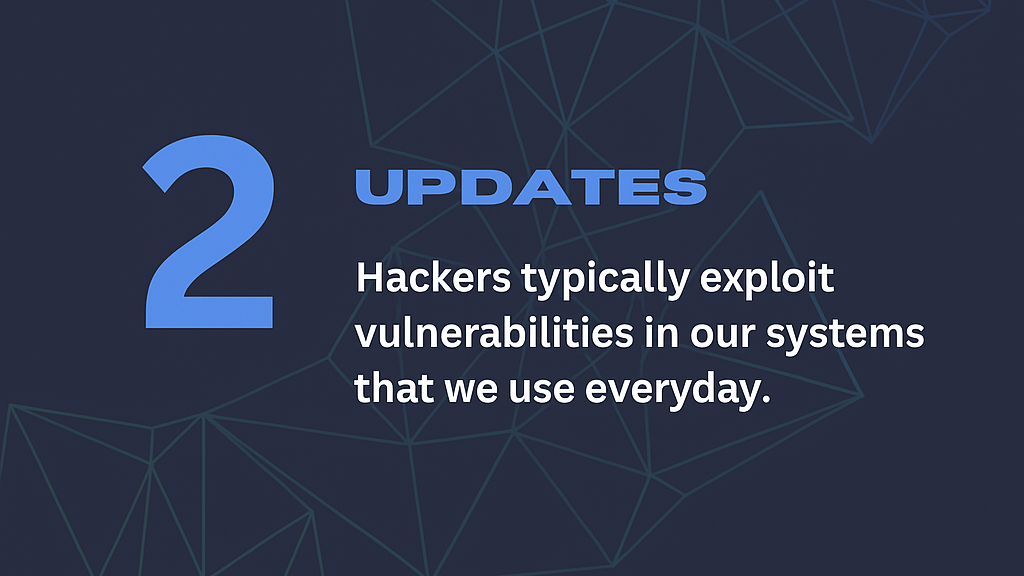
Tip 2 — Keep Systems Updated: Patch What You Own
Plain-English take: most ransomware and web break-ins use known bugs with public fixes. Your advantage isn’t a fancy tool; it’s a boring, repeatable process that finds assets fast, patches the right things first, and proves the fix stuck.
See everything you own. Build a living inventory that includes laptops, servers, firewalls, VPN concentrators, Wi-Fi access points, printers, NAS devices, cloud VMs, and the SaaS apps people actually use. Tag each with an owner, location, criticality, and end-of-life date. Shadow IT and home-office gear count—if it touches company data, it’s in scope. Visibility is your first control.
Prioritise by real-world risk. Not all vulnerabilities matter equally. Track exploited-in-the-wild/KEV items, prioritise internet-facing and business-critical systems, and set service-level targets: critical externals in ≤7 days, everything else in ≤30, emergency fixes in ≤72 hours. Pair this with rings and rollback: pilot group → department → whole company, with snapshots/backups and a written rollback so a bad patch is an inconvenience, not an outage.
Make patching boring (that’s good). Turn on automatic updates for operating systems and browsers. Standardise versions. Establish a predictable monthly maintenance window so patching stops fighting with daily work. Include firmware—firewalls, VPNs, switches, printers—because neglected appliances are frequent initial footholds. After each window, verify services, reboot where needed, and record a short change note so future you can roll back in minutes.
Scan and verify. Run authenticated vulnerability scans monthly and after major changes. Measure exposure age and time to remediate, not just counts. Feed findings into your ticketing system with owners and dates. Harden as you go—use secure baselines (e.g., CIS) to disable macros, unused services, and local admin rights so there’s less to patch and attack.
Handle exceptions without hand-waving. If a system can’t be patched quickly, add compensating controls: geo-block risky regions, restrict admin interfaces to allow-listed addresses, isolate the host, increase logging, and schedule replacement. For end-of-life tech, remove it from the internet and set a retirement date you’ll actually keep.
First 30-day rollout (one list):
- Week 1: Enable auto-updates for OS/browsers; pick a monthly patch window; standardise versions.
- Week 2: Deploy a central patching/RMM tool with reporting; snapshot servers before patching; include firewall/VPN/Wi-Fi firmware.
- Week 3: Build the inventory from device management, sign-in logs, DHCP, and a quick network scan; add remote/home-office devices.
- Week 4: Run a baseline authenticated vuln scan; ticket KEV/internet-facing items first; implement rings/rollback; publish a one-page patch SLA.
How you know it’s working: critical internet-facing vulns close in ≤7 days; ≥95% of systems meet patch SLAs; exposure age trends downward; there are zero end-of-life devices on the public internet; and post-patch checks show services healthy and backups intact.
Keep it durable. Review the inventory monthly, attach patch SLAs to vendor contracts, and present a simple KPI slide to leadership: “Time to patch critical externals,” “% within SLA,” and “EOL on internet-facing = 0.” When leaders see steady, boring wins, they’ll keep giving you the time to do it right.
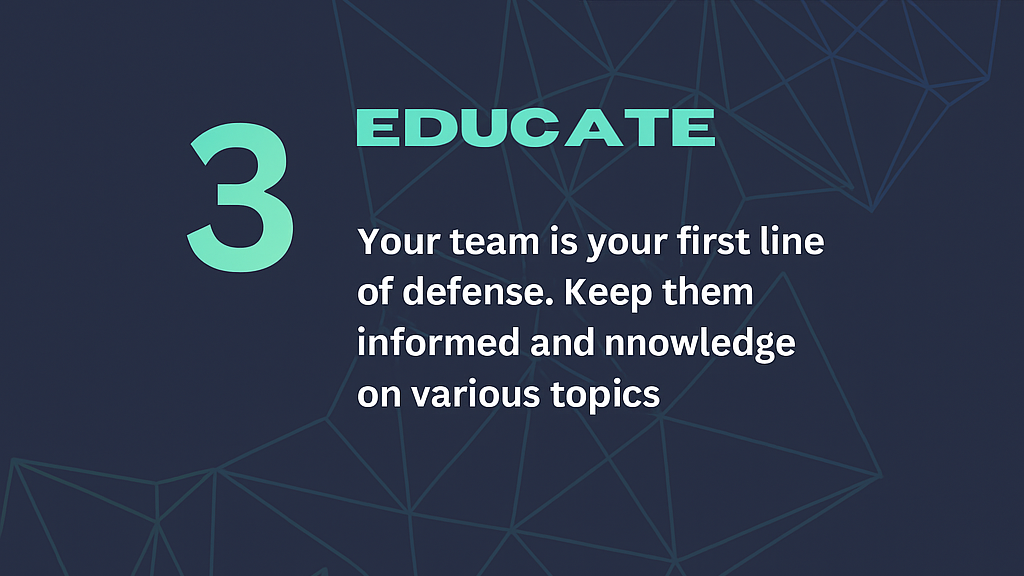
Tip 3 — Educate Your Team: People Are the First Line of Defence
Plain-English take: criminals exploit trust and speed—a realistic email, a QR code, a “helpdesk” call, or an MFA push at 7:03 p.m. The fix is habit: short training, easy reporting, realistic simulations, and locked-down devices that don’t bleed data when lost.
Teach in minutes, not marathons. Replace annual lectures with quarterly micro-lessons (5–7 minutes) staff can complete between tasks. Focus on what attackers actually use: polished fake logins, smishing texts, voice impersonation, poisoned QR codes, and MFA fatigue. Use examples from your own simulations and mail filters so content feels local. People remember stories they’ve seen.
Make reporting effortless—and rewarding. Add a one-click “Report Phish” button in Outlook/Gmail. Route submissions to IT/SOC, auto-cluster look-alikes, and send same-day feedback (“real phish—blocked,” or “safe—good catch”). Celebrate reporters publicly at all-hands or in Teams/Slack. Culture follows what leaders praise; make “I reported this” a badge of honour.
Train by role. Finance rehearses vendor-banking changes and invoice fraud with out-of-band callbacks. HR practises safe résumé handling and candidate ID verification. Executives and road warriors get a travel pack: hotspot over hotel Wi-Fi, security keys on the go, and how to verify a “CEO” voice note. IT drills admin hygiene and privilege separation.
Give people simple rules, not binders. Two that cover most risk: (1) if a request moves money, data, or access, pause and verify out-of-band; (2) don’t paste confidential or personal data into public AI/chat—use approved, logged options and scrub identifiers. Back this with device basics: full-disk encryption, automatic screen locks, and MDM/EMM so a lost phone gets wiped, not mourned.
Keep it visible. Add a two-minute Security Minute to monthly all-hands—show a real phish caught last month and why the report mattered. Provide printable cheat-sheets for desks and onboarding packets so “Stop-Look-Verify” is muscle memory.
First 30-day rollout (one list):
- Week 1: Enable the “Report Phish” button; create the feedback workflow; publish two cheat-sheets (reporting + payment verification).
- Week 2: Launch micro-lesson #1 (phishing + MFA fatigue) and a friendly email+SMS simulation; coach privately.
- Week 3: Run a BEC tabletop with Finance; lock in the callback script and approval thresholds.
- Week 4: Enforce encryption and MDM on corporate and BYOD devices accessing company email/files; issue the AI usage guideline.
How you know it’s working: training completion stays ≥90%; the report-to-click ratio rises (more reports before clicks); time-to-triage reported phish is <30 minutes during business hours; and device encryption hits 100% corporate / 95% BYOD with company data.
Keep it durable. Tie training to onboarding, make managers accountable for team completion, and share a monthly one-pager with three numbers (completion, report-to-click, time-to-triage). When staff see their reports stop real threats, participation becomes pride, not policing.
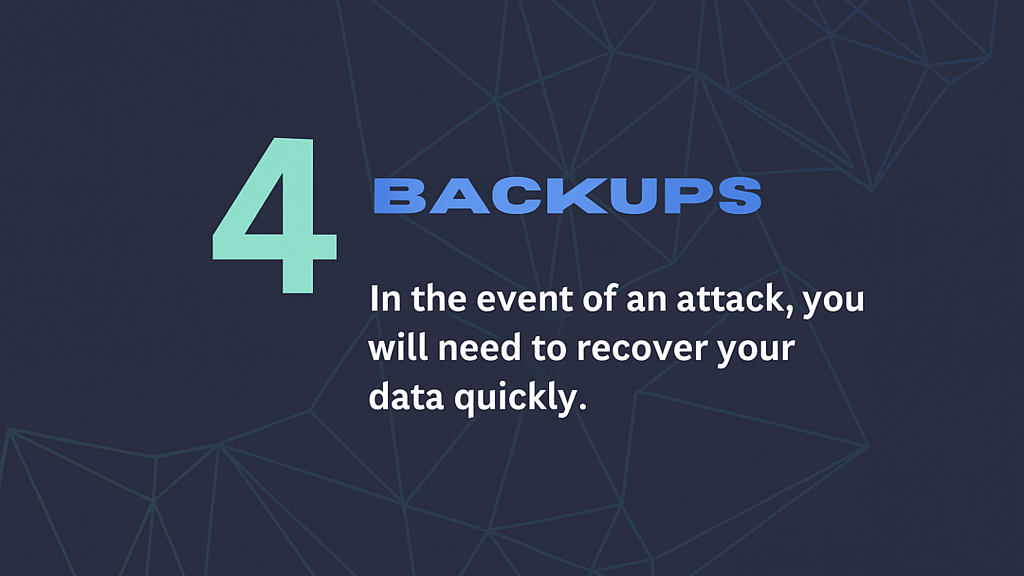
Tip 4 — Backups That Actually Restore: Your Safety Net
Plain-English take: backups aren’t about copies; they’re about recovery. When something breaks—ransomware, deletion, a bad update—your business survives if you can restore quickly and completely, without negotiating with criminals.
Set business targets first. Agree on RTO (how long each system can be down) and RPO (how much data you can lose). Accounting may need four hours and a one-hour RPO; archives can wait longer. Targets drive design and spending—you can’t engineer recovery you haven’t defined.
Design for resilience, not hope. Follow 3-2-1-1-0: three copies, two media, one offsite, one immutable/air-gapped, and zero errors in test restores. Build incremental-forever jobs with synthetic fulls, keep backup traffic segmented, and protect consoles with MFA/PAM. Store at least one copy in a separate account/tenancy/region so a single credential or region failure can’t take you out.
Protect SaaS and applications, not just files. Microsoft 365 and Google Workspace need dedicated backups (Exchange/Gmail, SharePoint/Drive, OneDrive, Teams). For databases and line-of-business apps, take application-consistent snapshots so services actually start post-restore. For endpoints, back up by role (finance laptops, design workstations) so you can rebuild quickly after loss or crypto-lockers.
Harden the backup estate. Use unique backup identities, MFA, role-based access, encryption at rest/in transit, and object-lock/WORM on repositories so ransomware can’t encrypt or delete recovery points. Monitor for job failures, mass deletions, and sudden drops in change rates—early signs of tampering.
Prove it quarterly. Every quarter, restore a file, a full server/VM, and a complete application stack (app + database + authentication). Time each step, compare with RTO/RPO, and fix gaps. Maintain a concise DR runbook—contacts, priorities, order of operations, DNS/identity steps—and keep a printed copy for when identity is down. For your “can’t-fail” systems, consider a warm standby/pilot-light in the cloud to turn days of outage into hours.
First 30-day rollout (one list):
- Week 1: Document RTO/RPO by system; choose repositories with immutability; separate backup credentials/accounts.
- Week 2: Enable Microsoft 365/Google Workspace backups; encrypt repos; segment backup traffic.
- Week 3: Run a server and a mailbox restore test; measure time; log lessons; fix blockers.
- Week 4: Finalise the DR runbook (printed + digital); plan a quarterly app-stack restore; evaluate warm-standby for one crown-jewel system.
How you know it’s working: backup success ≥98%; immutable copy age ≥7 days; quarterly file/server/app restores meet RTO/RPO; and at least one full application recovery is proven annually with a signed test report.
Keep it durable. Review restore results with leadership and insurers, assign owners to fix slow steps, and track improvements quarter over quarter. Backups you haven’t tested are just expensive wishes—evidence is everything.
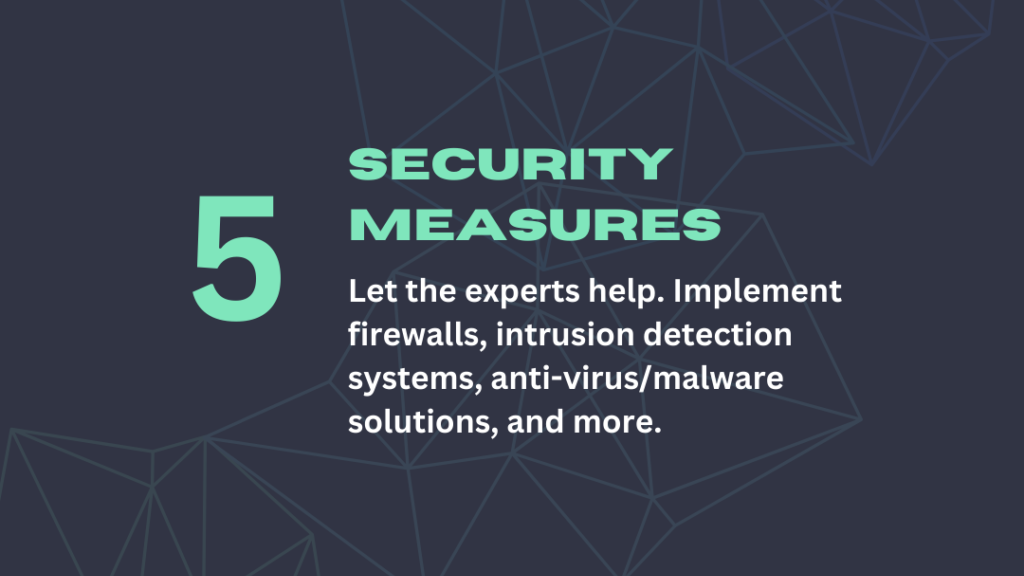
Tip 5 — Fit-for-Purpose Security Controls: Get Expert Help
Plain-English take: tools don’t protect you—operations do. A layered stack blocks common attacks, but real safety comes from 24/7 monitoring and response that isolates threats in minutes, not days.
Start at the endpoint. Deploy Endpoint Detection & Response (EDR) on every workstation and server. EDR spots behaviour—credential dumping, suspicious PowerShell, ransomware encryption—and can isolate a host instantly. Pair it with Managed Detection & Response (MDR) or a SOC so analysts hunt and act at 2 a.m., not Monday morning.
Bring signals together. Centralise identity, firewall/VPN, EDR, email-security, cloud, and backup logs in a SIEM. Add SOAR playbooks so the first five minutes of incident response run automatically: isolate host, disable user, block domain, kill process, capture artefacts. Correlation turns ten medium alerts into one high-fidelity incident you’ll actually handle.
Harden email and your brand. Enforce SPF/DKIM/DMARC and move DMARC to reject after a brief monitoring phase. Add impersonation protection, attachment sandboxing, and safe-link rewriting. These controls reduce the chance a convincing spoof ever lands—or if it does, that a single click causes harm.
Protect the web and remote access. Apply DNS/web filtering that follows users off-network. Replace broad VPN tunnels with Zero Trust Network Access (ZTNA) so staff reach only specific apps, gated by identity and device health. Segment networks: separate users from servers, isolate backups, and corral IoT/guest devices. Segmentation turns “incident” into “contained.”
Practise incidents so response is muscle memory. Run quarterly tabletops (ransomware, BEC, data loss) with a named incident commander empowered to isolate systems. Commission an annual penetration test and fix the findings. Map your stack to MITRE ATT&CK so you know what you prevent, what you detect, and what still needs coverage.
First 60-day rollout (one list):
- Days 1–15: Deploy EDR everywhere and enable MDR/SOC authority to isolate; turn on DNS filtering; enforce SPF/DKIM; start DMARC at quarantine.
- Days 16–30: Onboard identity/firewall/EDR/email/backup logs to SIEM; build SOAR playbooks for ransomware behaviour, impossible travel, OAuth consent spikes, and backup tampering.
- Days 31–45: Move DMARC to reject; roll out ZTNA for a pilot group; segment networks (users/servers/backups/IoT).
- Days 46–60: Run a ransomware tabletop; validate who can pull the isolation trigger; close gaps; publish MTTD/MTTR and EDR coverage in a one-page monthly scorecard.
How you know it’s working: EDR coverage = 100% of endpoints; MTTD < 30 minutes and MTTR < 2 hours for high-severity; DMARC is reject and spoof attempts bounce; tabletops yield actions that actually close; and the SIEM shows fewer, higher-quality incidents instead of alert noise.
Keep it durable. Review KPIs monthly with leadership, retune playbooks after every incident or test, and refresh the tabletop scenario each quarter. The winning rhythm is simple: prevent what you can, detect what you can’t, respond in minutes, learn every time.
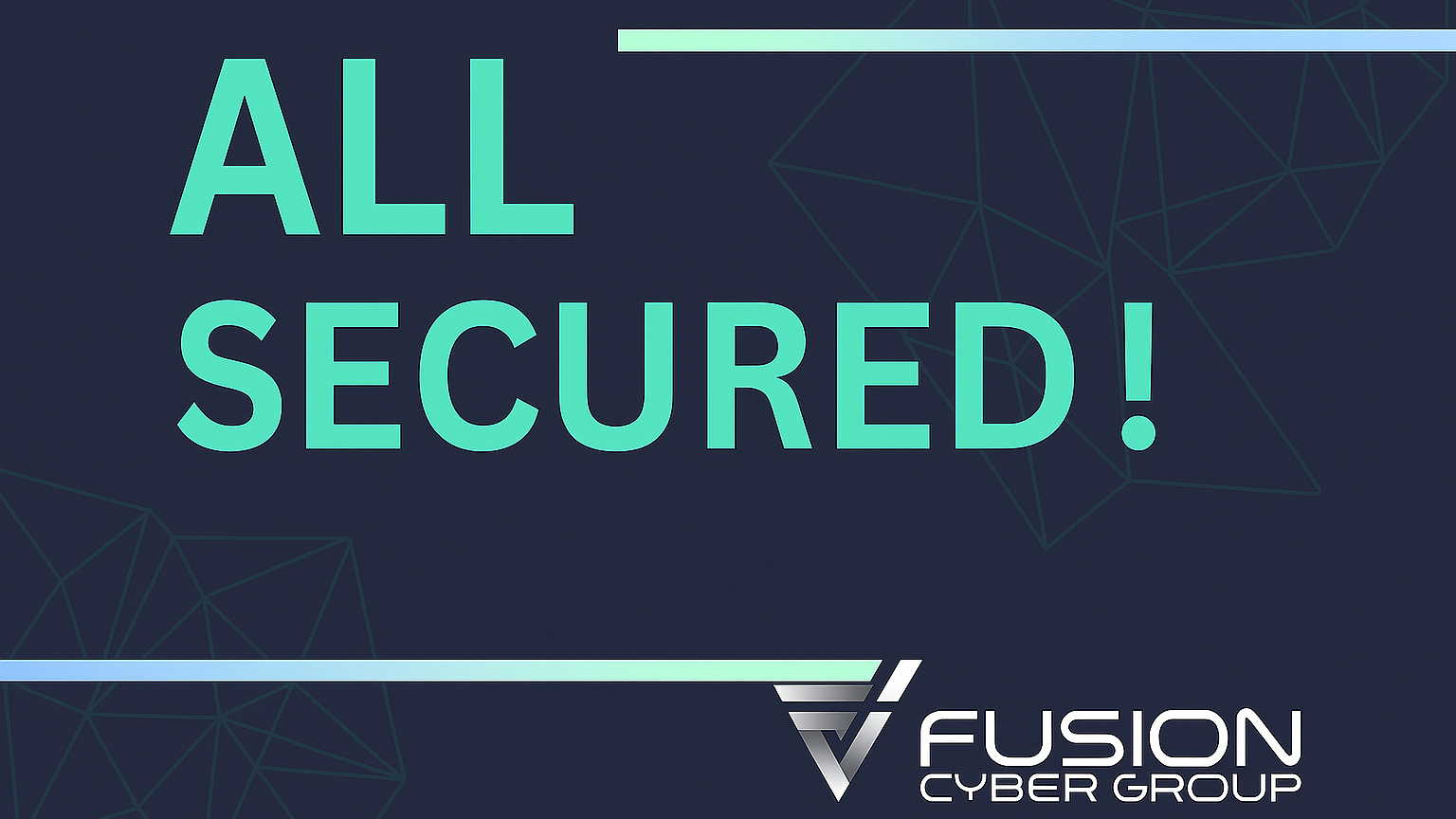
Final Thought
Cybersecurity isn’t a “big bang” project—it’s a rhythm. When identity is locked down, patches land on schedule, people pause and verify, backups prove they can restore, and your controls are watched 24/7, most incidents shrink from headline disasters to routine service tickets. The five practices in this guide are deliberately practical because Canadian SMBs don’t have time for theory: passphrases and MFA stop logins-as-attacks; a predictable patch window closes yesterday’s holes; micro-training plus easy reporting catches scams early; immutable, tested backups turn ransomware into a restore job; and an MDR-backed stack keeps eyes on glass while you sleep.
If you’re wondering where to start on Monday, start with identity and updates—MFA everywhere, legacy auth off, auto-updates on, patch night booked. Then schedule a 30-minute restore drill and add the “Report Phish” button. You’ll feel the risk drop immediately, and you’ll have real evidence—coverage reports, patch SLAs, restore timings—to brief leadership and satisfy insurers.
Fusion Cyber can help you turn this into a steady operating cadence with measurable outcomes and a financially backed guarantee. If you want a partner to deploy, tune, and run this program alongside your team—and put clear KPIs in front of your executives—let’s talk.
Featured links:
Managed Cybersecurity for SMBs
Cybersecurity Guarantee & Recovery
Baseline Cybersecurity Controls for SMBs
SMB Cybersecurity Risks in 2025
FAQ:
Is MFA too disruptive for staff?
Use app prompts or security keys. After a one-week adjustment, it’s a 5-second step that blocks most account takeovers.
Do Microsoft 365/Google backups already exist?
They offer availability and retention, not full point-in-time recovery. Use third-party backups to meet RPO/RTO and legal hold needs.
We’re under 50 people—do we still need 24/7 monitoring?
Yes. Attacks happen off-hours. A SOC sees lateral movement and stops ransomware precursors while you sleep.
How do we handle contractors and interns?
Provision via SSO with time-boxed access; enforce MFA and device posture; auto-expire accounts at contract end.
What’s the minimum viable stack?
MFA + password manager, automated patching, EDR with MDR, SaaS/server backups with immutability, email security with DMARC, DNS filtering, and a quarterly restore test.
Our Cybersecurity Guarantee
“At Fusion Cyber Group, we align our interests with yours.“
Unlike many providers who profit from lengthy, expensive breach clean-ups, our goal is simple: stop threats before they start and stand with you if one ever gets through.
That’s why we offer a cybersecurity guarantee: in the very unlikely event that a breach gets through our multi-layered, 24/7 monitored defenses, we will handle all:
threat containment,
incident response,
remediation,
eradication,
and business recovery—at no cost to you.
Ready to strengthen your cybersecurity defenses? Contact us today for your FREE network assessment and take the first step towards safeguarding your business from cyber threats!















